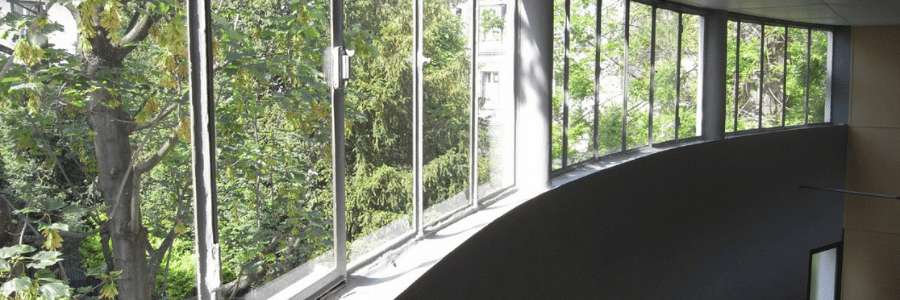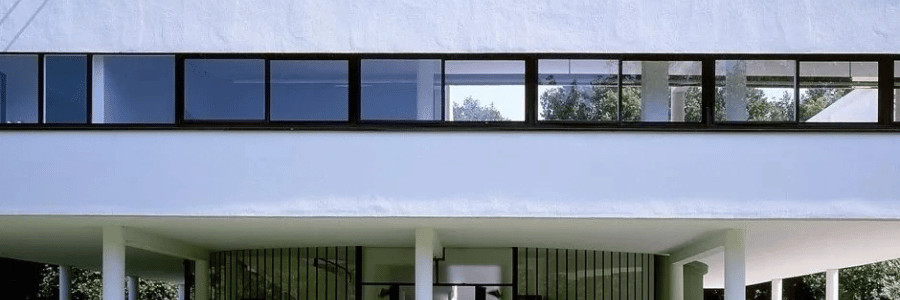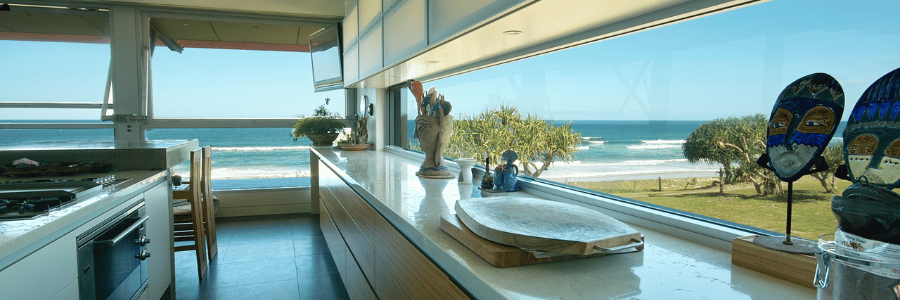When it comes to designing modern and stylish homes, few features can match the elegance and functionality of ribbon windows. These windows, often characterized by long, horizontal panes of glass, stretch across an entire wall or section of a building, offering uninterrupted views and an abundance of natural light. They’ve become a favorite in mid-century modern architecture and continue to be popular in contemporary designs today.
But what exactly are ribbon windows, and why should you consider them for your next home renovation or construction project? In this blog post, we’ll explore the unique attributes of ribbon windows, their benefits, challenges, and how to incorporate them into your home.
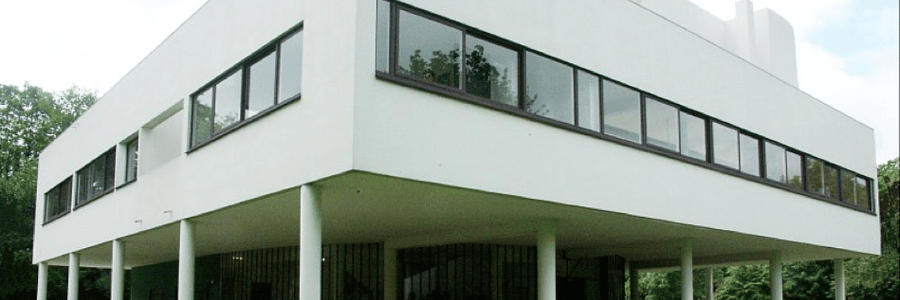
What Are Ribbon Windows?
Ribbon windows are a type of continuous, horizontal window arrangement, typically composed of several windows placed side by side in a row. Unlike traditional vertical windows, ribbon windows span the length of a wall, offering a panoramic view of the outdoors. This design is particularly popular in modern and minimalist architecture, where the focus is often on maximizing natural light and creating a sense of openness.
Typically, ribbon windows are characterized by:
- Horizontal alignment: The windows are placed next to each other horizontally, often with little or no vertical separation between them.
- Large glass panes: Ribbon windows allow for expansive glass panes, providing unobstructed views of the outside environment.
- Streamlined look: These windows often have narrow, sleek frames to maximize the amount of glass exposed to the outside and minimize the visual bulk of the frame.
Ribbon windows are often used in conjunction with other modern architectural features such as flat roofs, open floor plans, and minimalist design elements.
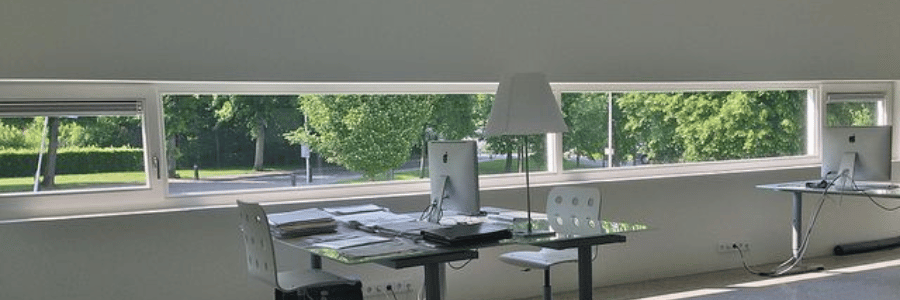
The Benefits of Ribbon Windows
1. Abundant Natural Light
One of the most significant benefits of ribbon windows is the natural light they bring into a space. The continuous horizontal design allows sunlight to flood into the room, making spaces feel brighter and more inviting. This is especially valuable in rooms like living areas, kitchens, or home offices, where good lighting can improve both functionality and mood.
Natural light also has health benefits, such as boosting vitamin D production and improving overall well-being. With ribbon windows, you can enjoy the feeling of being closer to nature, all while reducing your reliance on artificial lighting during the day.
2. Uninterrupted Views
Ribbon windows provide panoramic views of the outside world. Whether you’re overlooking a city skyline, a garden, or the ocean, these expansive windows can transform your living space into a visual extension of the outdoors. The seamless design ensures that there are no obstructions, giving you clear, wide-angle views that frame the natural beauty surrounding your home.
Incorporating ribbon windows into rooms with incredible vistas—such as a living room with a mountain view or a dining room overlooking a backyard—can enhance the sense of space and connection to nature.
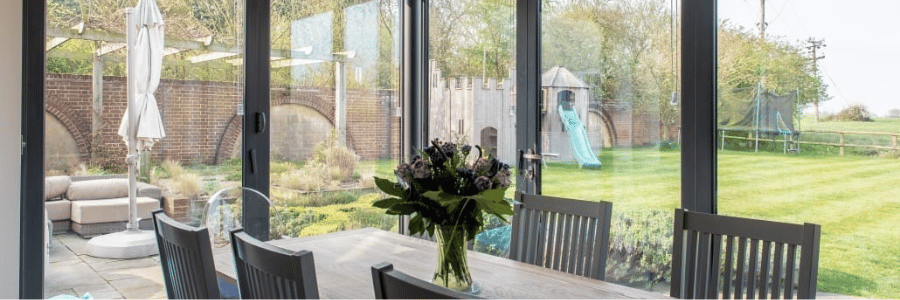
3. Modern and Aesthetic Appeal
Ribbon windows are a signature feature of modern and mid-century modern architecture, contributing to a clean, minimalist aesthetic. Their continuous, horizontal form exudes a sense of sophistication, making them perfect for contemporary homes that focus on sleek lines and open spaces.
The minimalistic design of ribbon windows also complements open-plan interiors, as they blur the boundaries between the indoor and outdoor environments. This creates an airy, spacious feel, where the outside world becomes a natural extension of the living space.
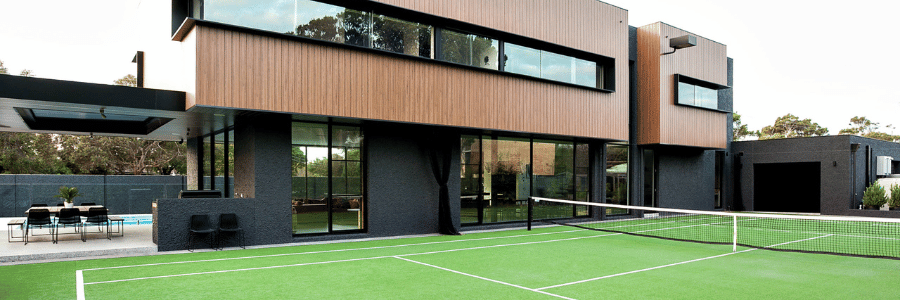
3. Modern and Aesthetic Appeal
Ribbon windows are a signature feature of modern and mid-century modern architecture, contributing to a clean, minimalist aesthetic. Their continuous, horizontal form exudes a sense of sophistication, making them perfect for contemporary homes that focus on sleek lines and open spaces.
The minimalistic design of ribbon windows also complements open-plan interiors, as they blur the boundaries between the indoor and outdoor environments. This creates an airy, spacious feel, where the outside world becomes a natural extension of the living space.
4. Energy Efficiency (When Properly Designed)
While large expanses of glass are often associated with heat loss, modern ribbon windows can be energy-efficient when equipped with double or triple glazing, Low-E glass, and argon gas fills. These energy-efficient technologies help to reduce heat transfer, keeping your home warm in the winter and cool in the summer.
When paired with proper window framing (such as thermally broken aluminum or insulated fiberglass), ribbon windows can provide excellent insulation while still offering the benefits of natural light and expansive views. It’s essential to work with professionals who understand how to integrate these windows with the best energy-saving features.

Challenges of Ribbon Windows
1. Cost and Installation Complexity
One of the main drawbacks of ribbon windows is their cost and installation complexity. Due to their size, custom fabrication, and the need for large, high-quality glass panes, ribbon windows tend to be more expensive than standard window designs. Additionally, because they require precise installation to ensure structural integrity and proper insulation, professional installation is essential.
The cost of ribbon windows can vary depending on factors like size, material, glass options, and customizations. If you’re on a tight budget, the cost of installing ribbon windows may outweigh their benefits, especially if you’re building or renovating a large home.
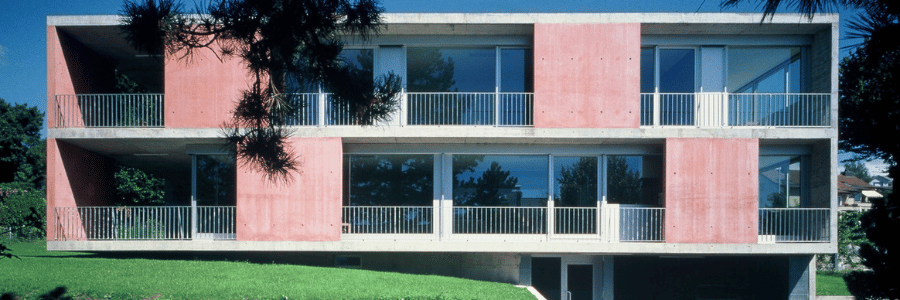
2. Privacy Concerns
Because ribbon windows are designed to provide expansive views, they may pose privacy concerns in certain situations. If your home is located close to neighboring buildings or overlooks busy streets, you may feel exposed or vulnerable when using the rooms with ribbon windows.
To mitigate this, consider installing drapes, blinds, or sheer curtains to maintain privacy when needed. Another option is to position ribbon windows strategically, such as facing a private backyard or garden, to ensure you still enjoy the view without compromising privacy.
3. Heat Gain and Loss
While modern ribbon windows are designed to be energy-efficient, large windows can still contribute to heat gain in the summer and heat loss in the winter. During the warmer months, excessive sun exposure through large panes of glass can increase your cooling costs, especially if the windows face west or south.
To avoid this, it’s crucial to choose windows with solar control glazing or to incorporate external shading options, such as awnings, overhangs, or louvers, to prevent overheating. Additionally, using high-performance coatings and tinted glass can help to reduce the impact of solar gain.
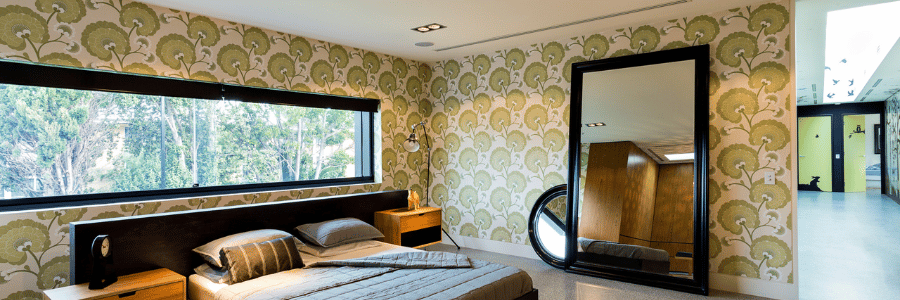
4. Potential for Structural Challenges
In order to support the weight of large glass panes in a ribbon window design, additional structural support may be required. Depending on the width and height of the windows, the supporting frame or wall may need to be reinforced to bear the weight of the glass and prevent sagging or buckling.
This can increase the complexity of the design and construction process, especially if the wall was not originally intended to support a large expanse of glass. It’s essential to consult with an architect or structural engineer to ensure your ribbon windows are safely incorporated into the design.
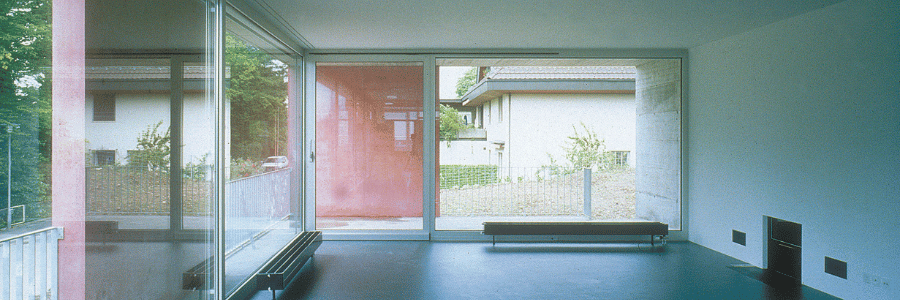
How to Incorporate Ribbon Windows Into Your Home
If you’re considering adding ribbon windows to your home, here are a few tips for incorporating them seamlessly into your design:
- Choose the Right Location: Ribbon windows work best in areas where the view is unobstructed and where you can benefit from natural light. Common locations include living rooms, dining areas, and even bedrooms—particularly those with garden or landscape views.
- Balance with Other Window Types: While ribbon windows are visually striking, it’s important to balance them with other types of windows to avoid overwhelming the space. Consider combining them with vertical windows or picture windows to break up the expanse of glass and create a more harmonious design.
- Use Proper Shading: To control the amount of sunlight entering the space, consider incorporating shading devices such as blinds, shades, or motorized curtains. Exterior shading options, like overhangs or awnings, can also help minimize solar heat gain while maintaining your view.
- Focus on the Frame Material: Choose materials that complement your overall aesthetic. For modern, minimalist designs, consider aluminum frames or fiberglass for their clean lines and slim profiles. For a more natural, warm look, wood frames can add texture and warmth.
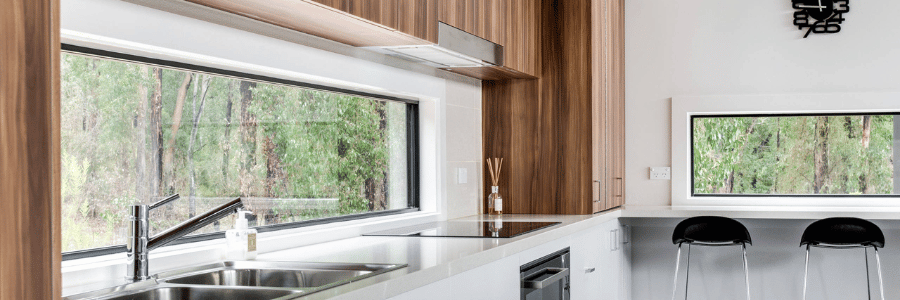
Final Thoughts
Ribbon windows are a striking feature that can transform any space, allowing for unparalleled natural light, expansive views, and a modern aesthetic. While they come with challenges, such as cost, privacy concerns, and heat control, their advantages in terms of design and functionality make them a compelling choice for many homeowners. By carefully considering the design, materials, and location of your ribbon windows, you can bring this architectural element into your home in a way that enhances both its beauty and performance.
If you’re looking for a window style that embodies contemporary elegance, offers views, and brings in natural light, ribbon windows might just be the perfect fit for your next project.

